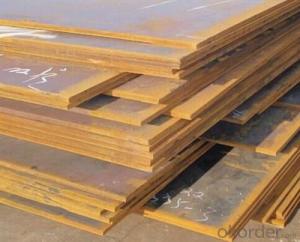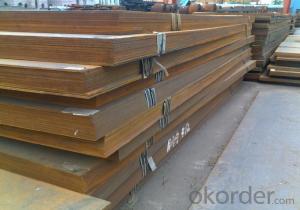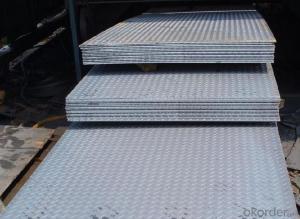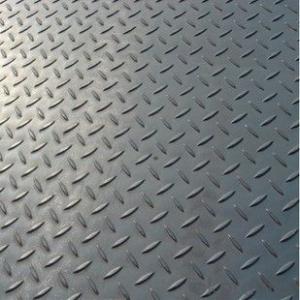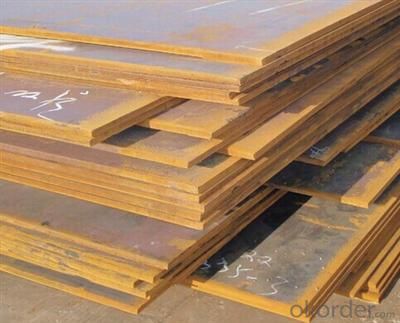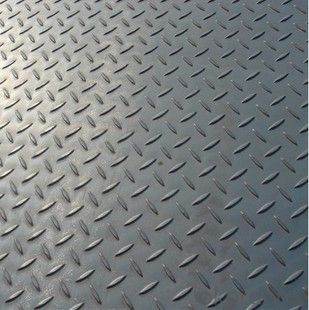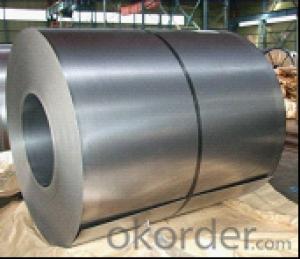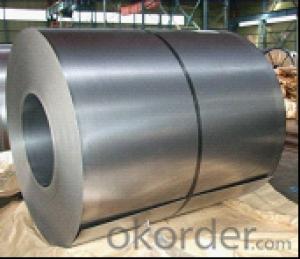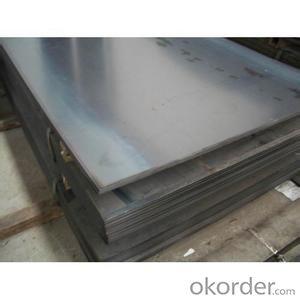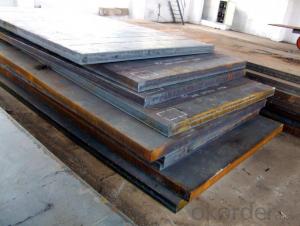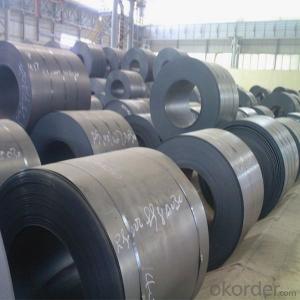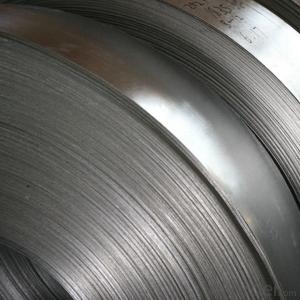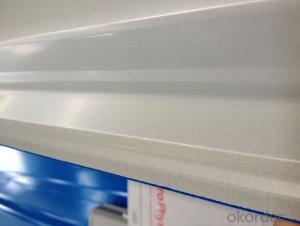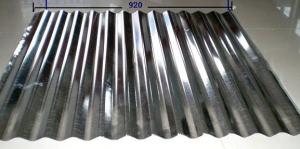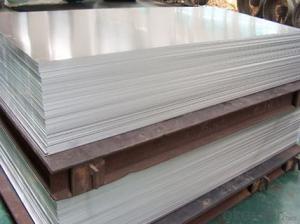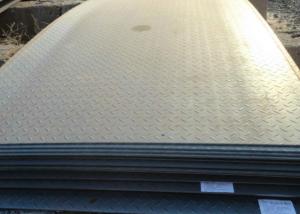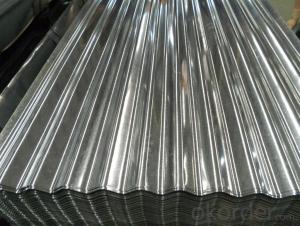Steel Plate Hot Rolled in Good Quality HR
- Loading Port:
- Tianjin
- Payment Terms:
- TT OR LC
- Min Order Qty:
- 500 m.t.
- Supply Capability:
- 6000 m.t./month
OKorder Service Pledge
OKorder Financial Service
You Might Also Like
Specification
1. Product Description
Steel plate is to use steel casting, cooling and then suppress the flat shape of steel.
Steel plate is flat shape, rectangular, directly or by the width of rolling steel strip shear.
Thin plate steel plate according to the thickness of the points, < 4 mm (0.2 mm) the most thin, thick steel plate 4 ~ 60 mm, thick steel plate 60 ~ 115 mm.
Steel plate by rolling, hot rolling and cold rolling.
The width of the sheet is 500 ~ 1500 mm;Width is 600 ~ 3000 mm thick.Divide sheet according to the grade of steel, ordinary steel, high-quality steel, alloy steel, spring steel, stainless steel, tool steel, heat-resistant steel, bearing steel, silicon steel and industrial pure iron sheet, etc.;According to professional use points, oil drums with boards, enamel using plate, bulletproof plate, etc.;Points on the surface coatings, galvanized sheet, tin plate, lead plate, plastic plating composite steel plate, etc.
2. Main Features
Alloy elements of quenching and tempering condition steel reinforcement is the most significant, because it makes full use of all the four kinds of reinforcement mechanism.Carbide precipitation when martensite formed when quenching, tempering, causing strong second phase strengthening, and greatly improve the toughness, so get martensite and its tempering steel is the most economic and effective comprehensive reinforcement method.
Alloying elements in steel, the primary purpose is to improve the hardenability of steel, to ensure easy access to martensite during quenching.Second is to improve the tempering stability of steel, to keep the martensite to higher temperature, the quenching steel precipitation of carbides during tempering is more fine, uniform and stable.So, under the same conditions, the strength of the carbon steel is higher than that in alloy steel.
3. Excellent Product Image
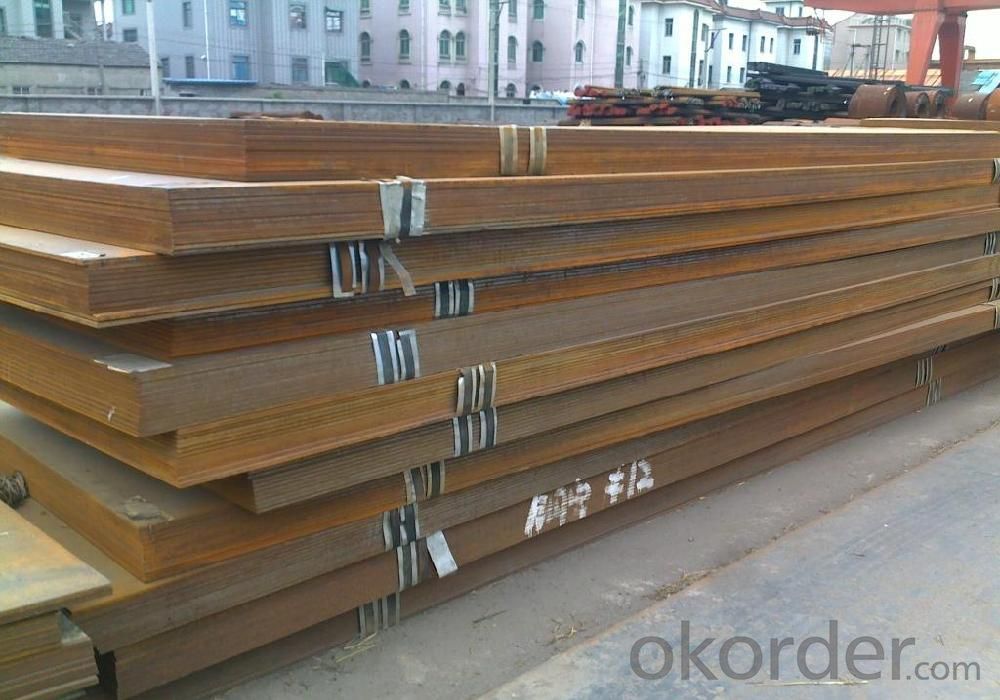
4. Application
1, the structure of the steel
General production structure with steel and welded steel structure, mainly used in steel structures, Bridges, ships, the production of vehicles.
2, weathering steel
Add special elements (P, Cu, C, etc.), has good corrosion resistance and atmospheric corrosion resistance, is used in the production of the container, special vehicle, also used for building structures.
Three, automobile structure steel
Has a good DRAWING performance and weldability of high strength steel plate, used in production of automobile FRAME, WHEEL, etc.
4, hot rolled steel
General mechanical structure with carbon steel, alloy steel, tool steel, after heat treatment engineering used in the production of various kinds of machinery parts and components.
5. FAQ
1.Q: Do you have attended any exhibition?
A: We almost go to Canton Fair and Overseas Exhibitions every year.
2. Q: How to guarantee the quality of the products?
A: We have established the international advanced quality management system,every link from raw material to final product we have strict quality test;We resolutely put an end to unqualified products flowing into the market. At the same time, we will provide necessary follow-up service assurance.
3. Q: How long can we receive the product after purchase?
A: Usually within thirty working days after receiving buyer’s advance payment or LC. We will arrange the factory manufacturing as soon as possible. The cargo readiness usually takes 15-25 days, but the shipment will depend on the vessel situation.
Why choose us?
Pre-sale Service
1. Sample can be offered with sample charge and courier fee by buyer's side.
2. We have full stock,and can deliver within short time.Many styles for your choices.
3. OEM and ODM order are accepted, Any kind of logo printing or design are available.
4. Good Quality + Factory Price + Quick Response + Reliable Service, is what we are trying best to offer you
5. All of our products are produce by our professional workman and we have our high-work-effect foreign trust-worthy sales team.
6. We have 18 years' experience of design, manufacture and sell lingerie, we cherish every order from our honor.
After you choose
1. Count the most efficient shipping cost and make invoice to you at once.
2. Check quality again, then send out to you at 1-2 working day after your payment.
3. Email you the tracking no, and help to chase the parcels until it arrive you.
- Q: What is the average wind load capacity of steel sheets?
- The average wind load capacity of steel sheets can vary depending on various factors such as the thickness of the sheet, the type of steel used, and the specific design and installation of the structure. However, steel sheets are known for their high strength and durability, making them capable of withstanding significant wind loads. Typically, steel sheets used for roofing or cladding applications are designed to meet specific wind load requirements based on regional building codes and standards. These standards take into account factors such as the geographical location, building height, exposure category, and wind speed. To determine the wind load capacity of steel sheets, engineers and architects use calculations and simulations to analyze the forces exerted by the wind on the structure. They consider factors such as wind pressure, building orientation, surface area, and the shape and profile of the steel sheets. In summary, the average wind load capacity of steel sheets cannot be generalized as it varies based on several factors. It is crucial to consult with a structural engineer or building professional to determine the appropriate wind load capacity requirements for a specific steel sheet application.
- Q: Can steel sheets be used for electrical applications?
- Yes, steel sheets can be used for certain electrical applications. Steel sheets are often used as a magnetic core material in transformers and in electrical motors. However, for most other electrical applications, materials with better electrical conductivity, such as copper or aluminum, are preferred.
- Q: What is the difference between a satin and mirror finish steel sheet?
- A satin finish steel sheet and a mirror finish steel sheet differ in terms of their appearance and level of reflectivity. A satin finish steel sheet has a smooth, matte appearance with a low level of reflectivity. It is achieved by using abrasive materials to create a brushed or textured surface. This finish is often preferred for its contemporary and understated look. Satin finish steel sheets are commonly used in architectural and interior design applications, such as kitchen appliances, countertops, and wall panels. On the other hand, a mirror finish steel sheet has a highly reflective surface that resembles a mirror. It is achieved by polishing the steel sheet to a high gloss using fine abrasives and buffing compounds. This finish is characterized by its intense shine and clarity, reflecting light and creating a glamorous and luxurious look. Mirror finish steel sheets are commonly used in decorative applications, including automotive trim, jewelry, and decorative architectural elements. In summary, the main difference between a satin and mirror finish steel sheet lies in their appearance and level of reflectivity. Satin finish offers a smooth, matte look with low reflectivity, while mirror finish provides a highly reflective, mirror-like surface.
- Q: Can steel sheets be used for elevator cabins?
- Yes, steel sheets can be used for elevator cabins. Steel is a common material choice for elevator cabins due to its strength, durability, and fire resistance properties. Steel sheets can be fabricated to create a sleek and modern look for elevator cabins, and they can also be easily customized to fit specific design requirements. Additionally, steel is a cost-effective option for elevator cabins as it is readily available and has a long lifespan.
- Q: What does steel plate "A3" mean?
- It can be used in all kinds of grinding tools, handles and other unimportant Abrasives parts
- Q: How do steel sheets handle extreme weather conditions?
- Steel sheets are renowned for their remarkable durability and resilience, rendering them exceedingly suitable for tackling severe weather conditions. Their capacity to endure harsh environments and extreme temperatures distinguishes them from other materials. One of the primary factors contributing to the ability of steel sheets to withstand extreme weather is their exceptional strength. These sheets are produced by combining iron and carbon, resulting in excellent structural integrity. This strength empowers them to resist the impact of powerful winds, heavy snow loads, and intense heat, making them an ideal choice for regions susceptible to hurricanes, blizzards, or heatwaves. Furthermore, steel sheets possess a high resistance to corrosion and rust. This is achieved through a process known as galvanization, wherein a protective layer of zinc is applied to the surface of the steel. This zinc layer acts as a shield, preventing moisture and oxygen from reaching the underlying steel and causing corrosion. Consequently, steel sheets can endure prolonged exposure to rain, humidity, and saltwater without deteriorating, a particularly crucial attribute in coastal or humid areas. Moreover, steel sheets exhibit excellent thermal efficiency, enabling them to handle extreme temperature fluctuations. They effectively insulate buildings during frigid winters and keep them cool during scorching summers. This thermal efficiency helps maintain a comfortable indoor environment, reduces energy consumption, and contributes to cost savings. Additionally, steel sheets are fire-resistant, providing enhanced safety in regions prone to wildfires or industrial accidents. They possess a high melting point, making them less likely to deform or collapse under extreme heat. This fire resistance assists in safeguarding structures and minimizing the spread of fires, thereby enhancing overall safety. In conclusion, steel sheets are well-equipped to withstand extreme weather conditions due to their remarkable strength, corrosion resistance, thermal efficiency, and fire resistance. Their durability and resilience make them an ideal choice for a multitude of applications, including roofing, siding, and construction, ensuring the longevity and safety of structures even in the most challenging weather conditions.
- Q: Are steel sheets suitable for bulletproof applications?
- Yes, steel sheets are commonly used in bulletproof applications due to their high strength and durability. They provide excellent protection against bullets, making them suitable for various bulletproof applications such as armored vehicles, body armor, and bulletproof barriers.
- Q: What are the different sheet metal joining techniques for steel sheets?
- Steel sheets can be joined using various techniques. Welding is commonly used, where the edges of the sheets are melted and fused together using heat and pressure. Different welding techniques like arc, spot, or laser welding can be used depending on the requirements. Riveting is another method, involving the use of metal fasteners called rivets. Holes are drilled in the sheets, and the rivets are inserted and deformed to secure the joint. This technique is suitable for structural applications due to its strength and durability. Bolting involves using bolts and nuts to connect the sheets. Holes are drilled, and bolts are inserted through them, with nuts tightened on the other side. Bolting allows for easy disassembly and reassembly, making it suitable for applications requiring frequent maintenance or repairs. Adhesive bonding is a technique where a strong glue is used to bond the sheets. The adhesive is applied between the surfaces, and pressure is applied for proper bonding. This method provides a clean and aesthetically pleasing joint without the need for drilling holes or using fasteners. Clinching is a cost-effective and quick method for joining steel sheets. It involves deforming the sheets using a punch and die, creating a mechanical interlock. This technique does not require additional materials and is suitable for various applications. The choice of joining technique depends on factors such as the specific application, required strength, durability, cost, and ease of assembly. Each technique has its own advantages and limitations.
- Q: Are steel sheets resistant to impact and abrasion?
- Yes, steel sheets are generally resistant to impact and abrasion due to their inherent strength and durability.
- Q: Can steel sheets be used for decorative wall panels?
- Yes, steel sheets can be used for decorative wall panels. They can provide a modern and industrial aesthetic to a space and offer durability and versatility in design options.
Send your message to us
Steel Plate Hot Rolled in Good Quality HR
- Loading Port:
- Tianjin
- Payment Terms:
- TT OR LC
- Min Order Qty:
- 500 m.t.
- Supply Capability:
- 6000 m.t./month
OKorder Service Pledge
OKorder Financial Service
Similar products
Hot products
Hot Searches
Related keywords
